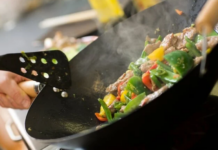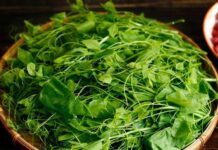1. Keeping Produce Fresh and Crisp
A well-known tip that not everyone pays attention to: when boiling vegetables, if you want to maintain their vibrant green color without turning them mushy, quickly scoop them out and plunge them into a bowl of ice-cold water. This “shock” treatment helps retain the crispness and attractive color. This method works not only for vegetables but also for roots like carrots and beans.
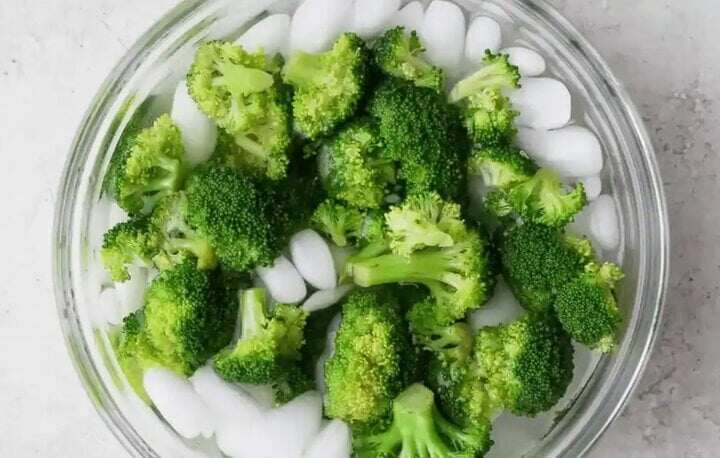
Meat that is firmer and easier to slice
For boiled meats such as pork knuckles and belly pork, simply soak them in ice water for a few minutes after cooking. This will firm up the meat, making it easier to slice into thin pieces without falling apart. The same goes for boiled chicken feet; a quick dip in ice water will give the skin a delightful crunchy texture.
2. The Secret to Crisp and Fresh Salads
Ever wondered why restaurant salads always seem crisper and fresher? The secret lies in a small but surprisingly effective step: before pouring the dressing, add a few ice cubes to it and give it a gentle stir. The chill from the ice helps keep the vegetables crisp and fresh as if they were just picked.
3. Bitter Gourd (Mướp Đắng) with Ice – Reducing Bitterness for a More Appealing Dish
For those who love raw bitter gourd dipped in shrimp paste, this tip is a must-know. Simply arrange a layer of ice cubes on a plate and place the sliced bitter gourd on top. You’ll be amazed as the ice works its magic, reducing the bitterness while enhancing the crispness. When paired with the shrimp paste, the result is a delightful blend of sweet and savory flavors.
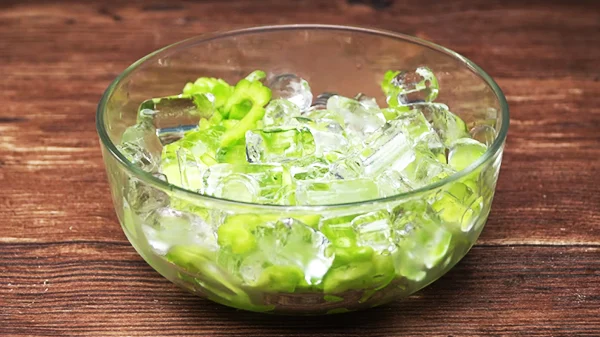
4. A Trick for Clear Soup without the Grease
Delicious soup can be unappetizing when grease floats on the surface. Here’s a simple solution: use a large ladle and a few ice cubes. Scoop the ice into the ladle and gently skim the surface of the soup. The fat will quickly solidify and stick to the bottom of the ladle, leaving you with a clear and tasty broth.
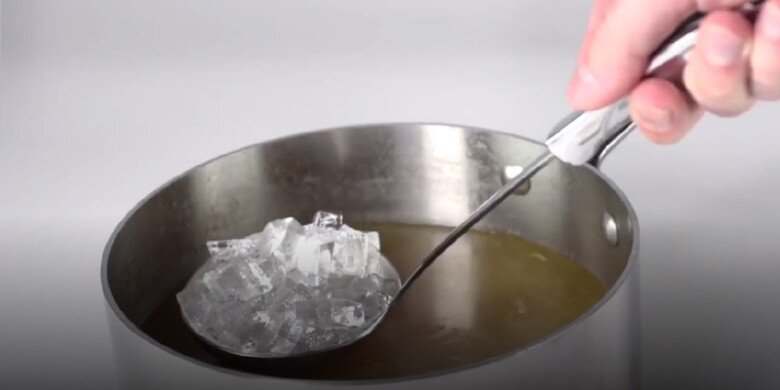
5. Reviving Leftover Rice – Soft and Fluffy Again
Reheated leftover rice often turns dry and loses its fluffy texture. Here’s a trick to bring it back to life: when reheating, add a few small ice cubes, cover the pot, and cook as usual. As the ice melts, the steam will moisturize the rice, making it soft and preventing it from burning. If you’re using a microwave, place an ice cube on top of the rice and cover it tightly with plastic wrap – your rice will be as good as freshly cooked.
Those everyday ice cubes can do more than just cool your drinks; they’re a kitchen treasure. A little attention to how you use them can make your dishes taste better and look more appealing with minimal effort. Give these tips a try, and you might just be surprised at the delicious results!







